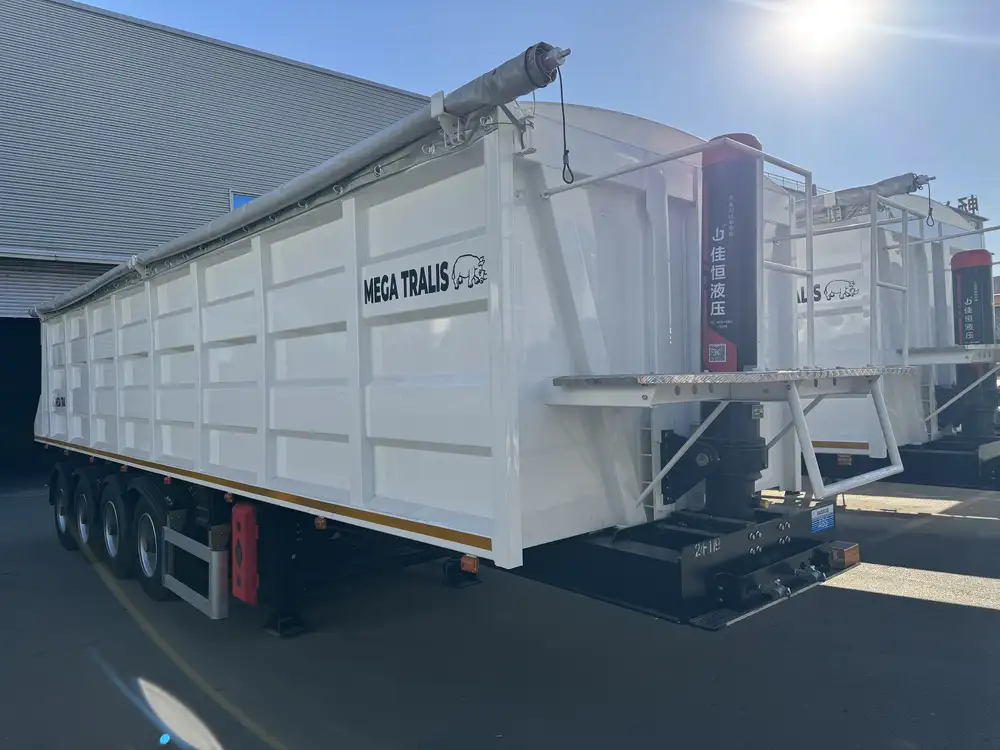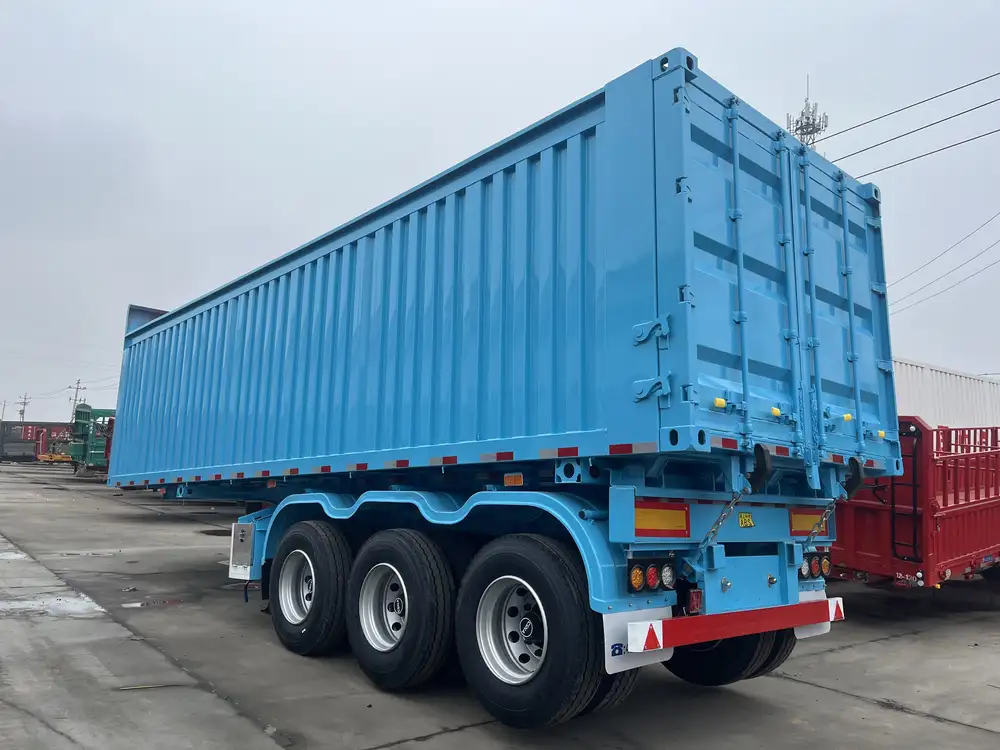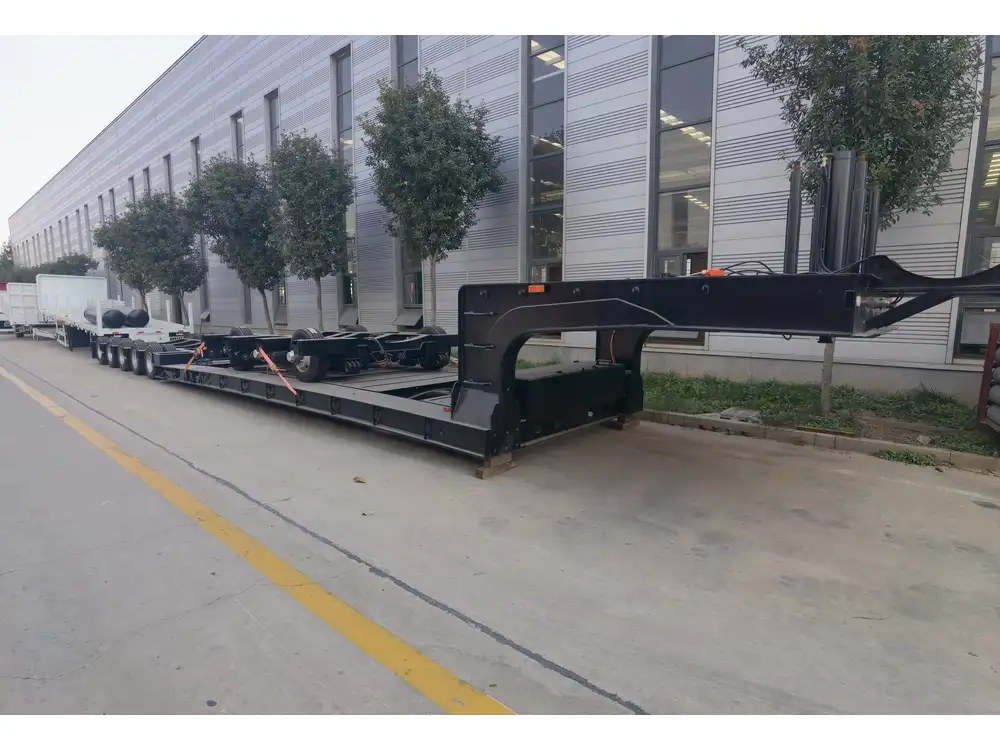Operating a dump trailer efficiently, especially the Bwise Ultimate Dump Trailer, is essential for maximizing productivity and ensuring safety on the job site. This article delves into the operational techniques, maintenance strategies, and troubleshooting tips that will help you master the usage of your Bwise dump trailer, enhance your skills, and optimize your workflow.
Table of Contents
Introduction to the Bwise Ultimate Dump Trailer
- Overview of Features
- Specifications
Pre-Operation Checklist
- Safety Equipment
- Trailer Preparation
Operating the Bwise Ultimate Dump Trailer
- Hitching the Trailer
- Loading Materials
- Dumping Procedures
- Unhitching the Trailer
Maintenance Guidelines
- Regular Maintenance Schedule
- Winterization Tips
- Tire Care
Troubleshooting Common Issues
- Hydraulic Problems
- Electrical Issues
- Structural Concerns
Best Practices for Safety and Efficiency
- Load Distribution
- Speed Limitations
- Weather Conditions
Conclusion
Introduction to the Bwise Ultimate Dump Trailer

Overview of Features
The Bwise Ultimate Dump Trailer is designed with durability and functionality in mind. It comes equipped with a robust steel frame, a powerful hydraulic dump system, and a user-friendly design that makes it accessible for operators of all skill levels. Notable features include:
- Heavy-Duty Construction: Built with high-quality steel for long-lasting use.
- Hydraulic Lift System: Easy dumping mechanism for efficient material handling.
- Multiple Size Options: Available in different sizes to suit various hauling needs.
Specifications
- Weight Capacity: Up to 14,000 lbs.
- Deck Height: Adjustable options for versatility.
- Tire Size: 15” dual tires for enhanced stability.
- Dump Angle: Optimized for maximum discharge efficiency.
Pre-Operation Checklist

Safety Equipment
Before operating your Bwise dump trailer, ensure that you have the following safety equipment on hand:
- Personal Protective Equipment (PPE): Hard hats, safety glasses, and gloves.
- Warning Triangles or Cones: To alert other drivers on the job site.
- Fire Extinguisher: In case of emergencies.
Trailer Preparation
Set your trailer up for successful operation by following these preparatory steps:
- Inspect the Trailer: Check for any visible damages, loose parts, or rust.
- Check Fluid Levels: Ensure hydraulic fluid and brake fluid are adequate.
- Verify Hitch Connection: Make sure the hitch is properly secured before moving.
Operating the Bwise Ultimate Dump Trailer

Hitching the Trailer
Hitching your dump trailer correctly is fundamental to safe transport. Here’s a step-by-step guide:
- Position the Tow Vehicle: Back the tow vehicle to the trailer, aligning the hitch ball with the coupler.
- Lower the Coupler: If applicable, lower the trailer’s coupler over the hitch ball.
- Secure the Coupler: Lock the coupler in place and attach safety chains.
- Connect Electrical Wiring: Ensure that the trailer’s lights and brakes are connected properly.
Loading Materials
Efficient loading is critical for maintaining balance and avoiding overloads. Follow these steps:
- Distribute Weight Evenly: Place heavier materials over the axles for stability.
- Avoid Overloading: Check the trailer’s weight limit by weighing materials beforehand.
- Secure the Load: Use straps and tarps (if necessary) to prevent movement.
Dumping Procedures
Dumping materials safely requires careful execution:
- Select a Dump Location: Ensure the area is clear of obstacles and personnel.
- Lower the Tailgate (if applicable): Open the tailgate to allow materials to exit.
- Activate the Hydraulic System: Use the control switch to raise the trailer bed.
- Monitor the Dump Process: Stand clear while monitoring for any issues.
- Lower the Trailer: Once materials are dumped, bring the trailer bed back to ground level.

Unhitching the Trailer
After use, unhitching should be done cautiously:
- Park on Level Ground: Ensure the vehicle and trailer are on an even surface.
- Lower the Trailer: If it’s elevated, lower it to the ground securely.
- Disconnect Electrical Wiring: Unplug the trailer lights.
- Remove Safety Chains: Carefully detach safety chains before uncoupling.
- Raise the Coupler: Ensure it is clear of the hitch ball before rolling away.
Maintenance Guidelines
Regular Maintenance Schedule
To prolong the life of your Bwise Ultimate Dump Trailer, adhere to a consistent maintenance routine:
| Maintenance Task | Frequency |
|---|---|
| Check hydraulic fluid levels | Monthly |
| Inspect brakes and lights | Before each use |
| Grease moving parts | Quarterly |
| Check tire pressure | Monthly |
| Inspect frame and structure | Every six months |

Winterization Tips
Before winter sets in, take these actions to protect your trailer:
- Flush the Hydraulic System: Use proper hydraulic fluid to avoid gel-like reactions in cold temperatures.
- Store Indoors: If possible, store the trailer in a sheltered environment to prevent rust.
- Cover with a Tarpaulin: Shield the trailer from harsh winter elements.
Tire Care
Regular tire maintenance is vital for stability and safety:
- Check Tread Depth: Ensure adequate tread depth for traction.
- Inspect for Damage: Look for cracks, bulges, or other signs of wear.
- Rotate Tires: Rotate every 6,000 miles or as needed to ensure even wear.
Troubleshooting Common Issues

Hydraulic Problems
If you encounter hydraulic issues, here’s how to approach them:
- Slow Actuation: Check for low fluid levels or leaks in the hydraulic system.
- No Movement: Inspect the hydraulic pump for clogs or malfunctions.
Electrical Issues
Electrical problems can hinder operations:
- Lights Not Functioning: Inspect wiring connections and replace any blown fuses.
- Brakes Not Engaging: Check the brake controller settings in the tow vehicle.
Structural Concerns
Routine visual inspections should catch structural issues:
- Cracks in Frame: Evaluate the integrity regularly; weld any cracks immediately.
- Rust Formation: Treat rusted areas with a rust inhibitor and stay ahead of corrosion.

Best Practices for Safety and Efficiency
Load Distribution
Proper load distribution is crucial for safe operation. Strive for:
- Balance: Aim for a 60/40 weight distribution front to back.
- Height Regulation: Keep loads low to reduce the center of gravity.
Speed Limitations
Adhering to speed limits enhances safety:
- Residential Areas: Limit speed to 15 mph.
- Highways: Follow local regulations, usually around 55-60 mph for trailers.

Weather Conditions
Operating a dump trailer in adverse weather can be hazardous:
- Avoid Icy Roads: Heavy loads can be particularly difficult to control.
- Visibility Issues: Never operate in fog or heavy rain unless necessary, and ensure all lights are functional.
Conclusion
Mastering the operation of the Bwise Ultimate Dump Trailer requires diligence, familiarity with its mechanisms, and an ongoing commitment to safety and maintenance. By following the guidelines outlined here, operators can enhance their skills, ensure longevity for their equipment, and streamline their operations, thereby maximizing efficiency and minimizing risk on the job site. With careful attention to detail and adherence to best practices, you’ll be well-equipped to harness the full potential of your Bwise dump trailer, paving the way for a successful and productive experience.



